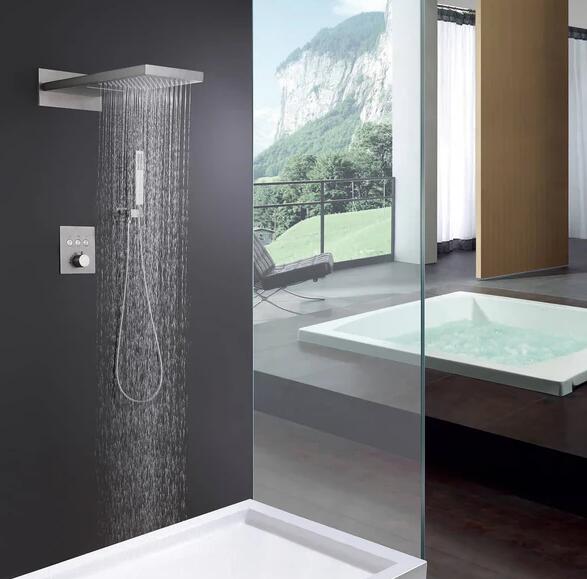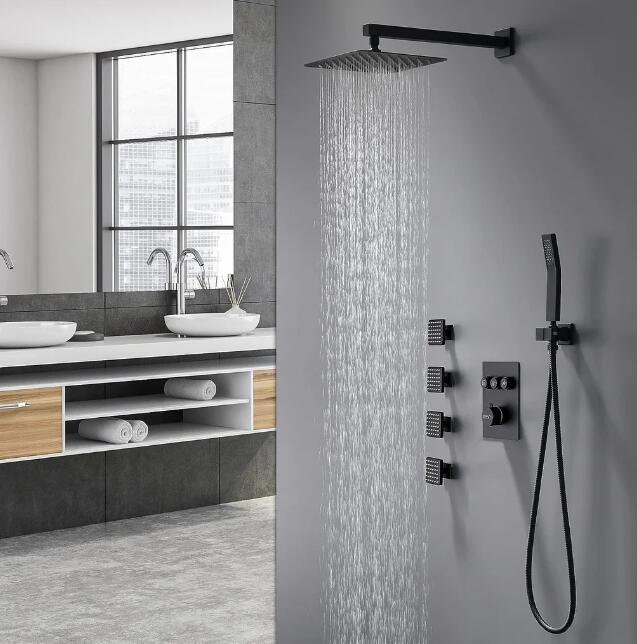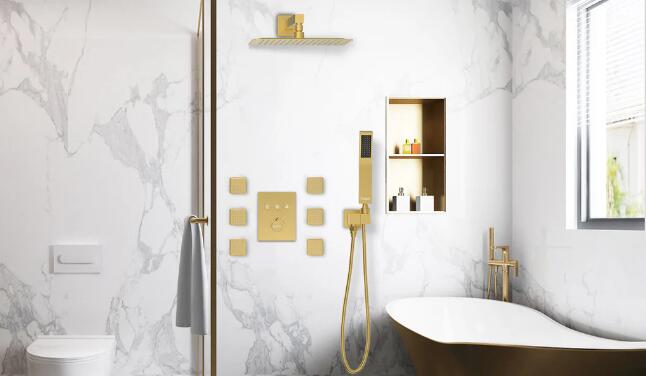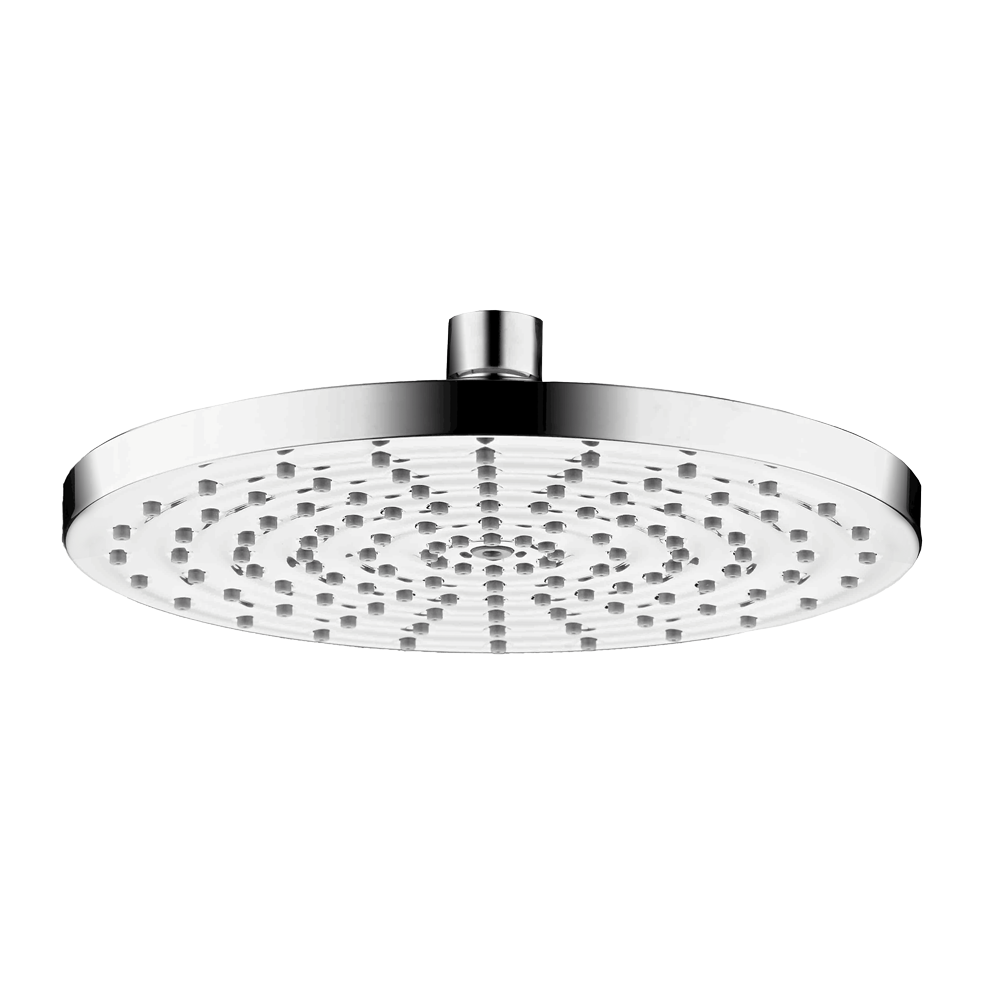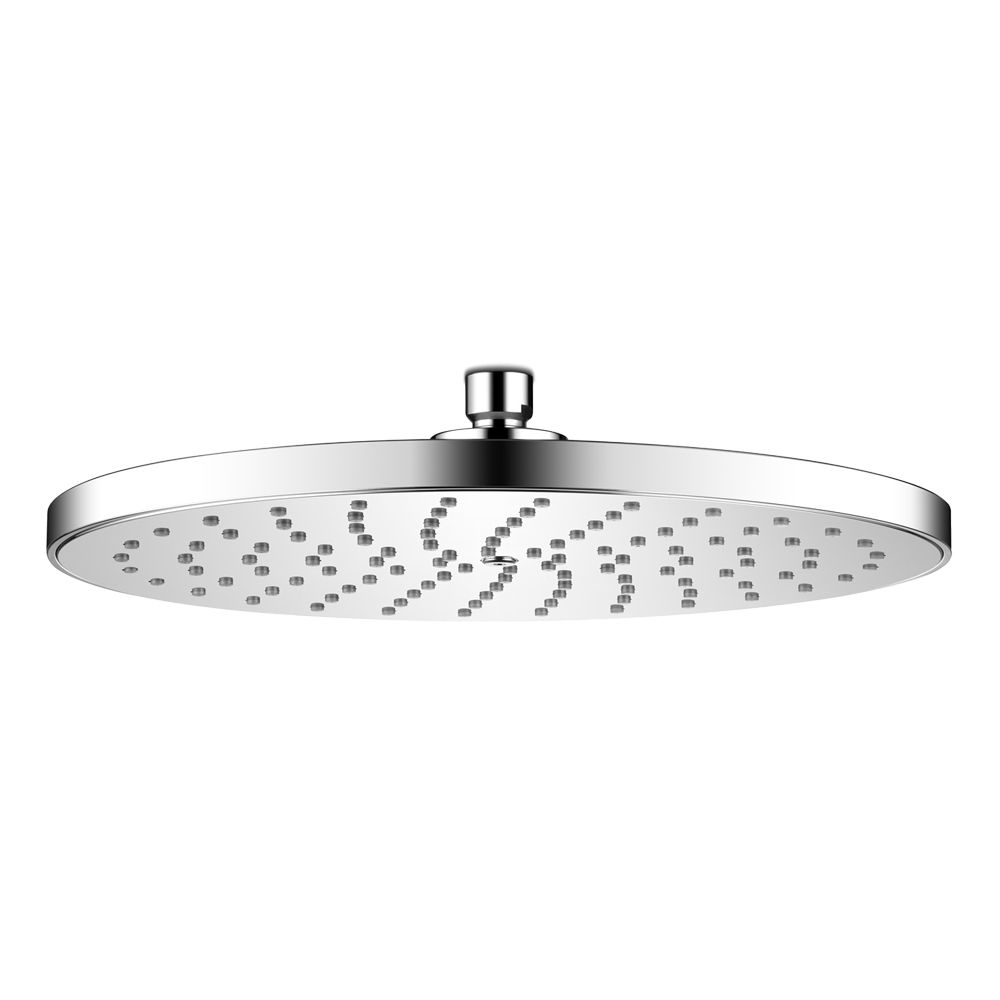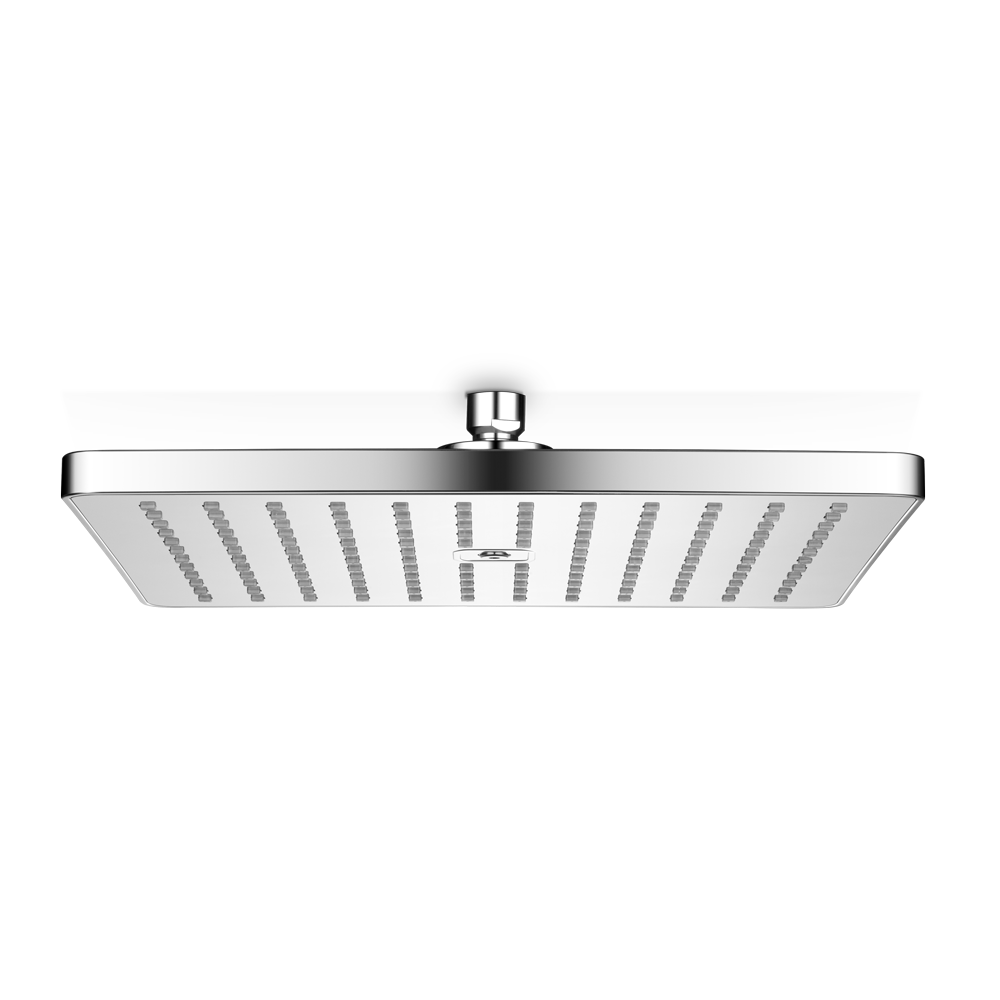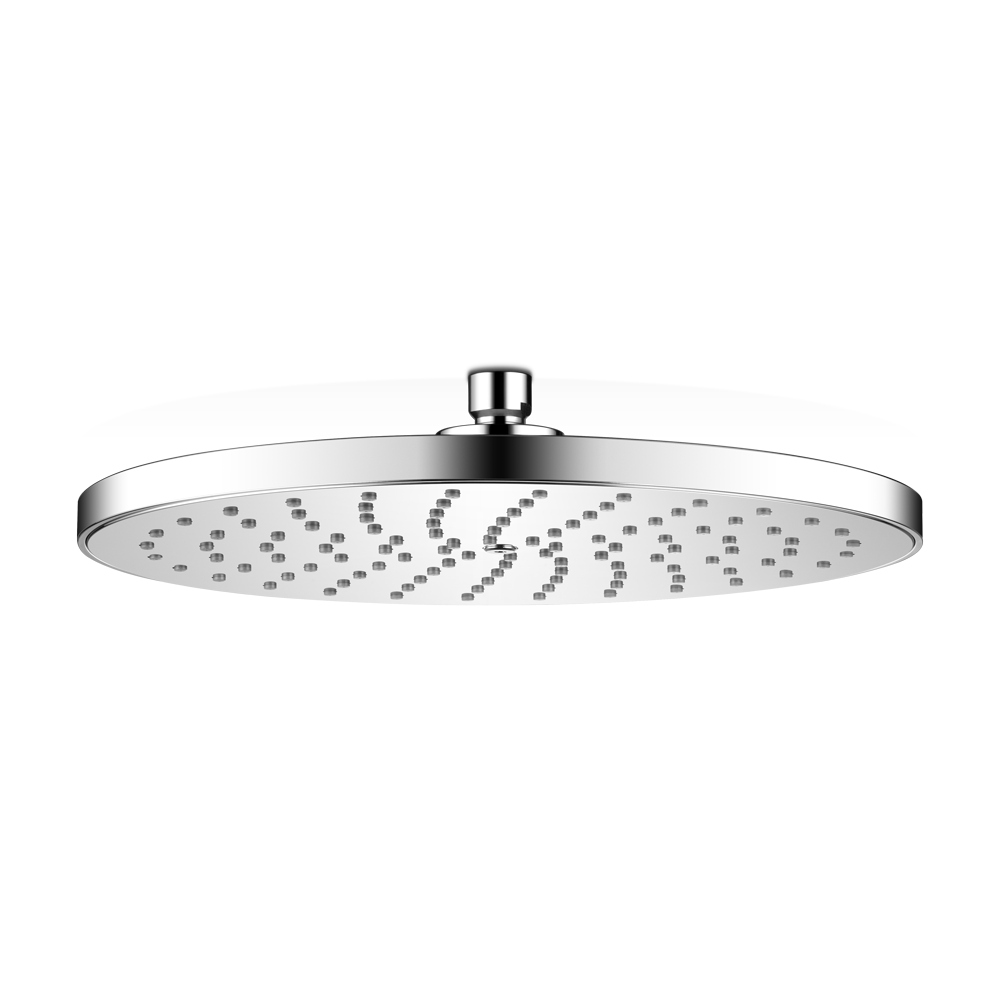Thermostatic Showers
RAIGU offer a superior showering experience with enhanced safety, comfort
Whether you prefer a concealed system with a digital display or a luxurious rain shower. RAIGU's thermostatic shower systems combine cutting-edge technology, premium materials, and stylish designs, making them the ideal choice for upgrading your bathroom.
Contact Us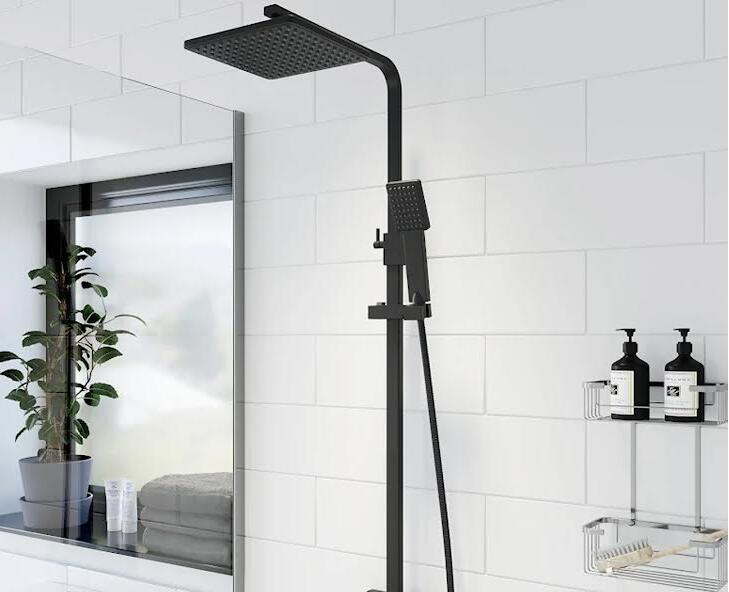
Thermostatic Shower
A thermostatic shower is a shower system equipped with a thermostatic mixing valve that automatically blends hot and cold water to maintain a preset temperature. This ensures a stable shower temperature, even if water pressure or supply changes occur elsewhere in the home. Unlike manual mixer showers, which require constant adjustment, or electric showers, which heat water directly, thermostatic showers provide a hands-free, safe, and comfortable experience.
Most thermostatic showers are mixer showers that draw water from the hot and cold water supplies, combining the two flows as they emerge from the shower head.
A thermostatic shower is a type of mixer shower featuring a thermostatic valve that maintains a constant water temperature. These types of showers are fed via a property’s hot and cold water supply, with an internal valve to mix them. So, if your shower is prone to running either too hot or cold or even consistently fluctuates in temperature, a thermostatic shower could be your answer! The thermostatic valve is so unique, as it mixes both hot and cold water together to a consistent and predetermined temperature. Doing so, this prevents scalding and cold shocks, making these innovative showers perfect for families with young children or the elderly.
A thermostatic shower works by mixing water from your hot and cold supplies to achieve the perfect temperature. Thermostatic showers automatically revert to your set temperature, so you won’t experience a sudden burst of cold water or scalding hot water when someone turns on a tap or flushes a toilet elsewhere in your home.
Key Components
- - Thermostatic Valve: The core component that regulates water temperature.
- - Mixer Valve: Combines hot and cold water supplies.
- - Showerheads: Options include overhead rain showers, handheld showers, or both for versatility.
How Does a Thermostatic Shower Work?
The thermostatic shower valve contains a temperature-sensitive element, such as a wax pellet or bimetallic strip, that adjusts the flow of hot and cold water based on temperature changes. If the water becomes too hot or cold due to external factors—like someone flushing a toilet—the valve quickly recalibrates to restore the desired temperature. This rapid response eliminates risks of scalding or cold shocks, enhancing shower temperature stability.
Learn more about the mechanics at Victorian Plumbing.
Thermostatic Showers for Families
Thermostatic showers for families are particularly valuable due to their safety features. Sudden temperature changes can be dangerous, especially for young children with sensitive skin or elderly individuals with reduced mobility. A thermostatic shower ensures a stable temperature, reducing the risk of burns or discomfort. For example, RAIGU’s systems include features like rotary adjustments and digital displays, making them user-friendly for all ages.
Types of Thermostatic Showers
Thermostatic showers come in various designs to suit different preferences and bathroom aesthetics:
- - Exposed Valves: Mounted on the wall, easy to install, and add a decorative touch.
- - Concealed Valves: Hidden behind the wall for a sleek, minimalist look.
- - Rain Showers: Large overhead showerheads for a luxurious, spa-like experience.
- - Handheld Showers: Flexible for targeted rinsing, ideal for families or pet owners.
RAIGU offers a range of these options, ensuring compatibility with diverse bathroom styles.
How to Choose the Right Thermostatic Shower
Selecting the best thermostatic shower involves considering several factors:
- 1. Water Supply System: Ensure compatibility with your home’s water pressure and system (e.g., mains-fed or gravity-fed).
- 2. Design Preference: Choose between exposed or concealed valves based on aesthetics and installation feasibility.
- 3. Features: Look for extras like digital temperature displays, multiple showerheads, or air-in technology for enhanced water pressure.
- 4. Brand Reliability: Opt for trusted brands like RAIGU, known for quality and durability.
- 5. Budget: Balance cost with desired features, as prices vary based on materials and technology.
RAIGU’s product pages, such as the Concealed Thermostatic Shower, provide detailed specifications to guide your decision.
RAIGU’s Thermostatic Shower Systems
RAIGU is a premier manufacturer of bathroom fixtures, and its thermostatic shower systems are designed to deliver exceptional performance and style. Below are highlights of their top models:
Concealed Thermostatic Shower System (Model RG1159)
- - Features: Advanced thermostatic shower control, digital temperature display, rotary adjustment, overhead rain shower, and handheld shower.
- - Materials: Brass, stainless steel, ABS, ceramic valve core.
- - Benefits: Precise temperature regulation, modern design, easy maintenance.
- - Image: Digital Display Shower.
Rain Shower System with Handheld (Model RG1164)
- - Features: 10-inch or 12-inch square rainfall showerhead, handheld shower, air-in technology for high pressure, lever handle operation.
- - Materials: Brass, 304 stainless steel, ABS, copper.
- - Benefits: Luxurious shower experience, versatile modes, durable construction.
- - Image: Rain Shower System.
Square Thermostatic Shower System (Model RG1152)
- - Features: Square design, rotary adjustment, overhead rain shower, handheld shower, and faucet.
- - Materials: Brass, stainless steel, ABS.
- - Benefits: Modern aesthetic, comprehensive showering options, user-friendly.
- - Image: Square Shower System.
Why Choose RAIGU?
RAIGU stands out in the competitive bathroom fixture market for several reasons:
- - Premium Materials: Uses brass, stainless steel, and ABS for corrosion resistance and durability.
- - Innovative Technology: Features like digital displays and air-in technology enhance functionality.
- - Aesthetic Appeal: Chrome and brushed nickel finishes complement various bathroom designs.
- - Manufacturing Excellence: RAIGU’s 19,000-square-meter factory in Yuhuan, Zhejiang, employs over 120 professionals, including 10 R&D and 8 QC staff, ensuring top-quality products. Learn more at RAIGU’s Factory Tour.
Installation and Maintenance
Installing a thermostatic shower valve requires professional expertise, particularly for concealed systems, to ensure proper alignment and prevent leaks. RAIGU provides detailed installation guides and recommends hiring a licensed plumber. Maintenance is straightforward, with disassembleable components for easy cleaning and repair, as noted in RAIGU’s product descriptions.
Frequently Asked Questions (FAQs)
-
1. What is a thermostatic shower?
A thermostatic shower uses a valve to maintain a constant water temperature, preventing sudden changes that could cause scalding or cold shocks.
-
2. How does a thermostatic shower work?
The thermostatic valve adjusts hot and cold water flow based on temperature changes, ensuring a stable output.
-
3. What are the benefits of a thermostatic shower?
Benefits include safety, comfort, convenience, and potential energy savings.
-
4. Are thermostatic showers safe?
Yes, they are designed to prevent extreme temperature fluctuations, making them ideal for families.
-
5. How do I choose the best thermostatic shower for my home?
Consider your water system, design preferences, features, and budget. RAIGU’s range offers options for various needs.
-
6. Can I install a thermostatic shower myself?
Professional installation is recommended, especially for concealed systems, to ensure safety and performance.
-
7. What is the difference between a thermostatic shower and a mixer shower?
A mixer shower requires manual temperature adjustments, while a thermostatic shower automatically maintains the set temperature.
-
8. Do thermostatic showers save energy?
Yes, by reducing hot water waste, they can lower energy consumption.
-
9. Can Thermostatic Showers Be Easily Maintained?
Replacing, adjusting, and calibrating valves, such as the specialised cartridge valve that controls and shuts off the flow of hot and cold water, is all relatively easy to do by oneself. However, thorough research is recommended as certain parts and valves may not be replaceable if damaged. If you are unsure, it’s generally best to call in a professional.
-
10. Do I need a thermostatic shower?
This all depends on what type of plumbing system you will be running your shower off. If you have a pressurised system (also known as ‘unvented’ or ‘sealed’ hot water systems), you water will either be heated directly on demand by a combination (combi) boiler, or via a thermal store.
if you're undertaking a bathroom renovation and disturbing the wall tiles in any event, then it makes sense to add a thermostatic shower. They're also a much safer choice in homes with younger children and elderly family members.
This choice will also depend on your budget and the project size. Manual showers tend to be cheaper, and are easier and cheaper to install if you intend to add a shower above an existing bath.
-
11. Are power showers and thermostatic showers the same?
In short, no, they are not. So, what is a power shower? Power showers combine water from your hot and cold water supplies to achieve the required temperature and feature a shower pump, designed to boost water pressure.
There are two main types of power shower:
Thermostatic power showers are designed to keep the pressure and temperature of the water coming from your shower balanced, even when water is used elsewhere in the house. Therefore these are a type of thermostatic shower.
Manual power showers, on the other hand, rely on the user to adjust the temperature to suit.
-
12. What is the difference between electric showers and thermostatic showers?
An electric shower heats water on demand and unlike mixer showers, only requires a cold water feed.
The best electric showers have many benefits. They never run out of hot water as water is heated when it is needed rather than being stored in a tank. In addition, if you have a combi boiler, the temperature of the water from an electric shower is not affected when water is used elsewhere in the house.
-
13. What is the main difference between a thermostatic shower system and a non-thermal shower system?
The main difference is the way they regulate the water temperature in the shower. Thermostatic shower systems have an automatic temperature control mechanism that maintains a constant water temperature, while non-thermostatic systems require manual adjustment of the hot and cold water supply to set the desired temperature.
-
14. Are thermostatic shower systems safer than non-thermostatic shower systems?
Yes, thermostatic shower systems are generally considered safer because they prevent sudden temperature fluctuations. This can reduce the risk of burns or electric shock during the shower, especially if the water supply changes elsewhere in the home.
-
15. Does a thermostatic shower system provide better comfort while showering?
Yes, thermostatic systems provide better comfort as they ensure a consistent water temperature throughout the shower. The user can maintain the desired temperature without frequent adjustments, providing a more relaxing and enjoyable shower experience.
-
16. Are non-thermostatic shower systems cheaper than thermostatic shower systems?
The upfront cost of a non-thermostatic shower system is usually less than that of a thermostatic system. However, the added safety and comfort benefits of a thermostatic system may justify the higher cost for many users.
-
17. Can both types of shower systems be used in any bathroom?
Yes, both thermostatic and non-thermostatic shower systems can be used in any bathroom, depending on user preference and budget. However, building codes or regulations in certain areas may require the use of thermostatic shower systems in certain environments to meet safety standards.
-
18. Can I upgrade a non-thermostatic shower system to a thermostatic shower system?
In many cases, yes. Non-thermostatic shower systems can often be upgraded to a thermostatic system by replacing the existing valve with a thermostatic valve or retrofitting the thermostatic spool. However, the feasibility of an upgrade depends on the specific shower system and its components.
-
18. Can I upgrade a non-thermostatic shower system to a thermostatic shower system?
In many cases, yes. Non-thermostatic shower systems can often be upgraded to a thermostatic system by replacing the existing valve with a thermostatic valve or retrofitting the thermostatic spool. However, the feasibility of an upgrade depends on the specific shower system and its components.
-
19. Do thermostatic shower systems save water compared to non-thermostatic systems?
Yes, thermostatic shower systems can help save water because they don't require the user to adjust the hot and cold water supply to find the desired temperature. This reduces waste and ensures the water remains at the set temperature throughout the shower.
-
20. Are there any specific maintenance requirements for thermostatic shower systems?
Both types of shower systems require regular maintenance, but thermostat systems may require occasional checks and adjustments to ensure the automatic temperature controls are functioning properly. Non-thermostatic shower systems may require maintenance associated with manual control knobs and handles. For optimum performance, the manufacturer's maintenance guidelines must be followed.
-
21. Which type of shower system is more common in modern bathrooms?
Due to its safety, convenience and water-saving advantages, thermostatic shower systems are becoming more and more common in modern bathrooms. However, many bathrooms still have non-thermostatic shower systems, especially in older buildings or areas with limited budgets.
-
1. What is a thermostatic shower?
How RAIGU Can Help?
With a wide range of different shower models and shower enclosures and professional staff available for advice, RAIGU is happy to answer any questions you might have about which kind of shower is right for your home. Taking the time to research your options will mean that you get the perfect shower, whatever your needs are, and our staff are the experts you need to ask. They know their stuff and can save you from making expensive mistakes.
Thermostatic showers represent a significant advancement in bathroom technology, offering unparalleled safety, comfort, and convenience. Unlike traditional showers prone to temperature fluctuations, thermostatic showers maintain a consistent water temperature, making them ideal for families and individuals seeking a reliable showering experience. RAIGU, a leading brand in bathroom fixtures, excels in delivering high-quality thermostatic shower systems that combine innovative technology with stylish design. This comprehensive guide explores what thermostatic showers are, how they work, their benefits, and why RAIGU’s products are the top choice for modern bathrooms.
- RAIGU has a solution to meet your needsVisit RAIGU’s thermostatic shower to explore their range and transform your bathroom today

 Languages
Languages Home
Home Products
Products Capacity
Capacity Factory Tour
Factory Tour Quick Sample Production
Quick Sample Production Contact Us
Contact Us